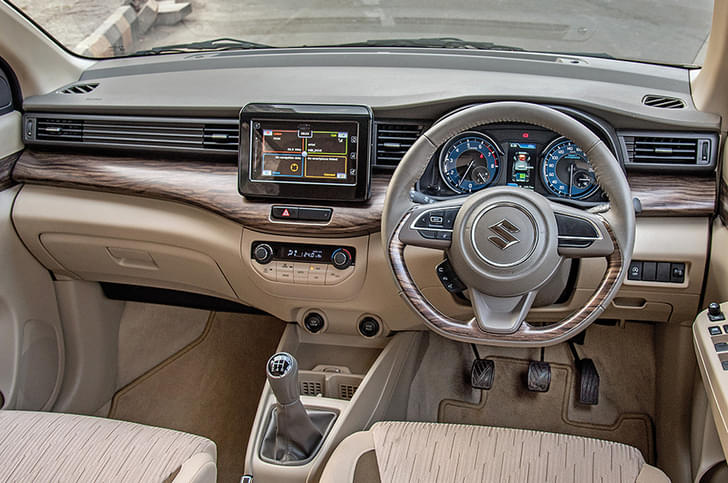The Seltos began Kia’s Indian innings back in 2019, and it’s been a sales sensation ever since, having gone home to over 5 lakh buyers. Since then, though, newer rivals have raised the bar further with more features, tech and hybrid powertrains. Now, in a bid to push the Seltos back to the top of the segment, Kia has updated the SUV. Initially, it might seem that the changes are subtle, but there’s a bit more to the Seltos facelift than meets the eye.
Kia Seltos exterior design and engineering – 8/10
Design changes are minimal but it still remains a handsome SUV
In this facelift, it’s fair to say that the changes on the outside are evolutionary rather than revolutionary – but that’s not a bad thing. The Seltos was already a handsome SUV, and the subtle updates now make it look even more contemporary.
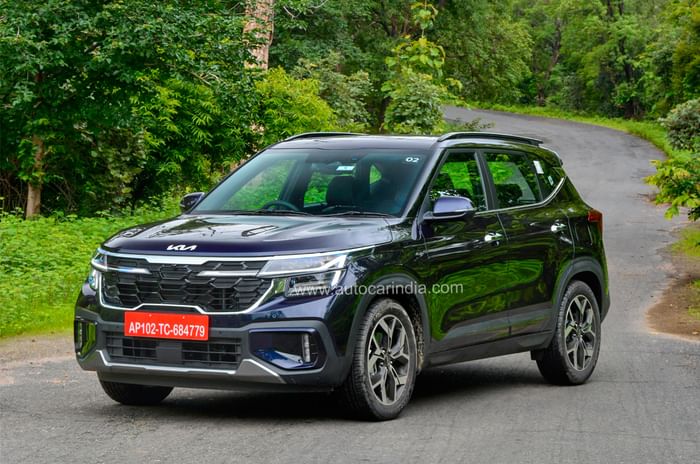
Compared to the outgoing model, the new Seltos gets a larger iteration of Kia’s ‘tiger nose’ front grille, a new bumper, tweaked headlights, a fresh LED DRL signature that extends into the grille but sits lower, and a new four-block pattern for the fog lamps. Along the sides, changes are more subtle: the GT Line variants retain the same 18-inch alloys from the earlier X-Line and now have body-coloured detailing on the cladding.
The biggest visual changes are at the rear - a new connected light bar replaces the old chrome strip, the vertical tail-lamps are new, and the bumper houses reversing lights and body-coloured inserts. Sequential turn indicators are also part of the update, and there’s a new ‘Pewter Olive’ shade too.
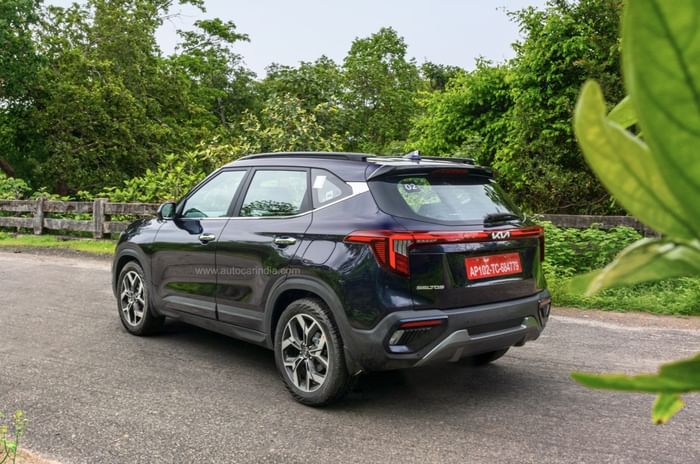 Connected LED light bar replaces the chrome strip on the tailgate.
Connected LED light bar replaces the chrome strip on the tailgate.
As before, the Seltos is available in three variant lines Tech Line, GT Line and X-Line. GT Line and X-Line get slightly different body kits, including distinct bumpers, grille inserts, skid plates, and twin exhaust tips for the turbo variants. Notably, the GT Line drops the red detailing, which actually works in its favour.
Kia Seltos interior space and comfort – 9/10
Interior looks and feels premium; cabin is spacious enough for 5 adults
Step inside and your attention is immediately drawn to the curved, dual-screen setup for the instrument cluster and infotainment. It looks cleaner, lacks a binnacle for better visibility, and the 10.25-inch screens are sharp, colourful, and responsive. The digital cluster mimics analogue dials, with design changes based on drive mode.
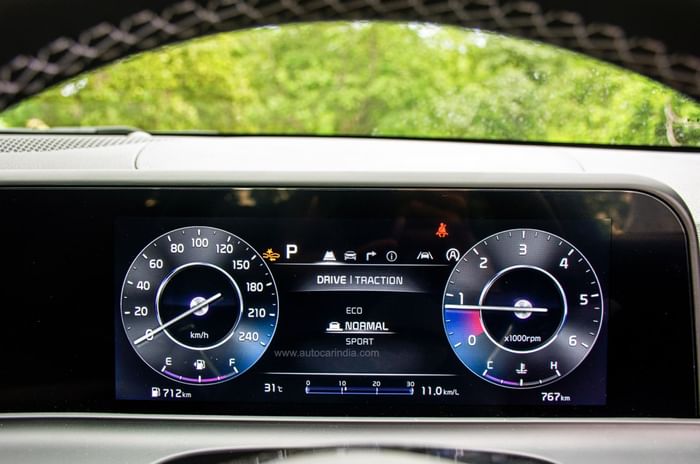 The digital dials are bright and have a different animation for each drive mode.
The digital dials are bright and have a different animation for each drive mode.
The touchscreen is slick and supports wireless Android Auto and Apple CarPlay, Hinglish voice commands, OTA updates, and a useful split-screen layout. The steering remains largely the same but gets new buttons for ADAS controls.
The dashboard feels tidier thanks to slimmer AC vents and repositioned controls. The attention to detail extends to high-quality rotary dials and switchgear. GT Line interiors get an all-black scheme with white accents – less flamboyant than the earlier red but likely to appeal to more buyers. The panoramic sunroof offsets the darker interior by letting in light.
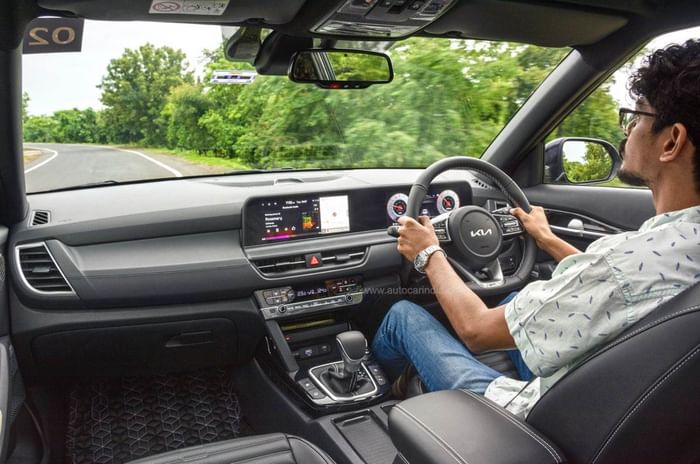 Twin screens and slimmer AC vents make the dashboard look cleaner.
Twin screens and slimmer AC vents make the dashboard look cleaner.
The front seats are supportive and well-cushioned, with ample adjustment. The rear offers generous head- and knee-room, and comfortably seats three adults. Rear passengers benefit from AC vents, window blinds, a reclining backrest, updated touch-controlled air purifier, and Type-C charging ports. All windows now offer one-touch up/down functionality. Boot space remains at 433 litres.
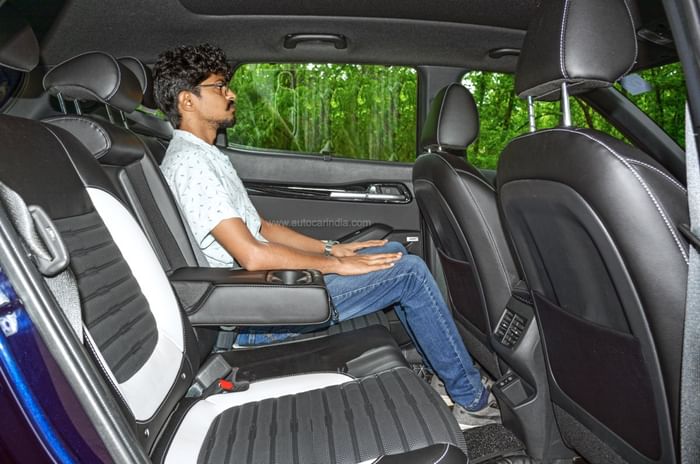 Space at the rear is ample and the backrest can be reclined too.
Space at the rear is ample and the backrest can be reclined too.
Interior themes vary across variants: the GT Line gets black with white inserts, X-Line adds Sage Green touches, HTX+ uses black and brown, HTX opts for black and beige, and lower Tech Line trims get all-black with fabric. While the variety is nice, it could confuse buyers – and custom upholstery options would’ve added a premium touch.
The Seltos was a well-equipped SUV, to begin with, but newer SUVs have moved the game forward. Fret not, the Seltos is now packed with all the latest features like a panoramic sunroof, dual-zone climate control (first-in-class), a dual-screen setup for the instrument cluster and infotainment, radar-based ADAS and an electronic parking brake. Another small change is the new key, which looks and feels more premium than the older one.
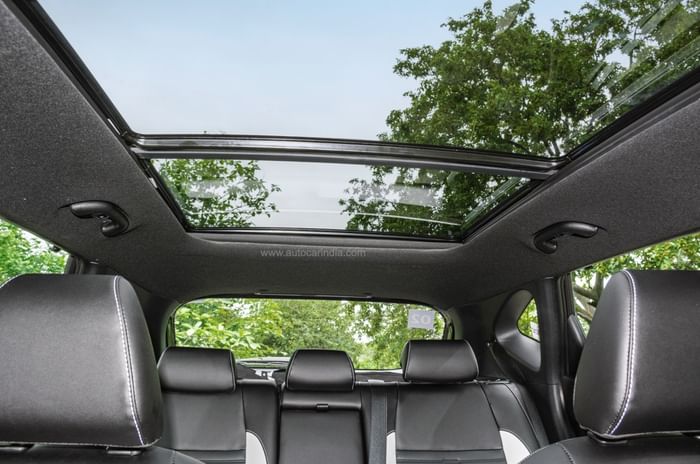 A panoramic sunroof is now part of the package.
A panoramic sunroof is now part of the package.
Other features of note on higher-spec variants are the 360-degree camera, a blind-spot monitor, a heads-up display, auto headlamps and wipers, a Bose audio system, powered driver’s seat, leatherette upholstery, ventilated front seats, an onboard air purifier, wireless phone charger and much more. Six airbags, disc brakes all around, ESP, hill-hold assist and a TPMS are standard fit on all variants of the Seltos, and the higher variants also get front and rear parking sensors.
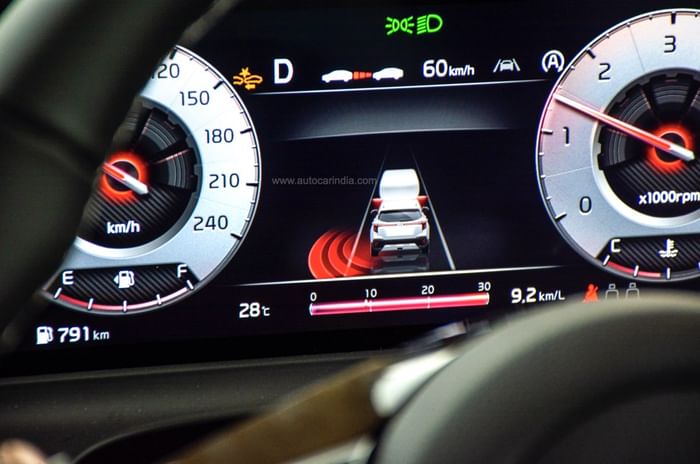 Adaptive cruise control and lane keep assist work well on well-marked roads.
Adaptive cruise control and lane keep assist work well on well-marked roads.
A highlight of the Seltos’ safety suite, however, is the ADAS. Using a combination of five cameras and three radar sensors, the Seltos facelift packs in 17 ADAS functions like forward collision warning assist, auto emergency braking, blind-spot collision warning, lane-keep assist, adaptive cruise control and more. While we only got a brief taste of these features, they worked just fine on the well-marked roads in and around Nagpur. The only caveat is that you’ll have to get used to the beeps and warnings the system keeps throwing at you on our chaotic roads. However, the ADAS features can be switched off should you wish to do so.
Kia Seltos performance and refinement – 8/10
All engines are refined; turbo-petrol has punchy performance while the diesel feels ideal for road trips
The Seltos facelift gets the same 1.5-litre, naturally-aspirated petrol and 1.5-litre diesel engines as before, but there’s a new turbo-petrol motor on offer. Replacing the 1.4-litre T-GDi unit is a larger 1.5-litre engine producing 160hp and 253Nm – 20hp and 11Nm more than its predecessor.
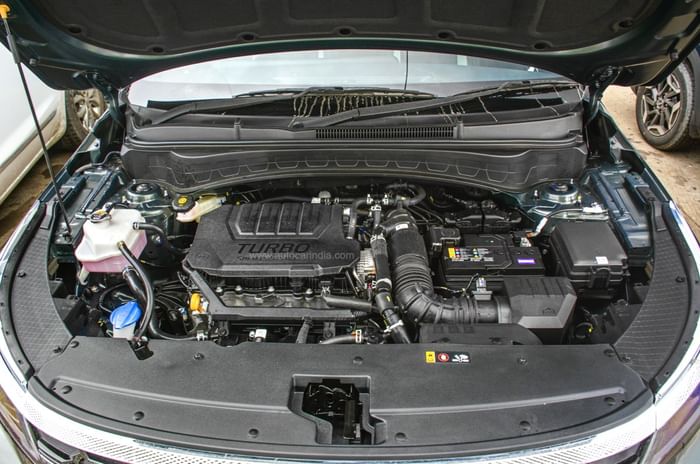 New, refined 1.5 turbo-petrol engine has class-leading output.
New, refined 1.5 turbo-petrol engine has class-leading output.
We sampled it with the 7-speed DCT (also available with a 6-speed iMT), and it impressed with its refinement and strong, linear power delivery. It feels quick in Sport mode and the DCT’s rev-matching on downshifts adds to the fun. It can be a little jerky at low speeds when feathering the throttle, but for enthusiasts, it’s the most rewarding option.
The 1.5 diesel meanwhile, which we sampled with a 6-speed torque converter (also offered with a 6-speed iMT), continues with 116hp and 250Nm. It's smooth, now BS6 Phase II-compliant, and fairly silent – ideal for long-distance cruisers. While it lacks the turbo-petrol’s punch, it’s composed and relaxed smooth in real-world use.
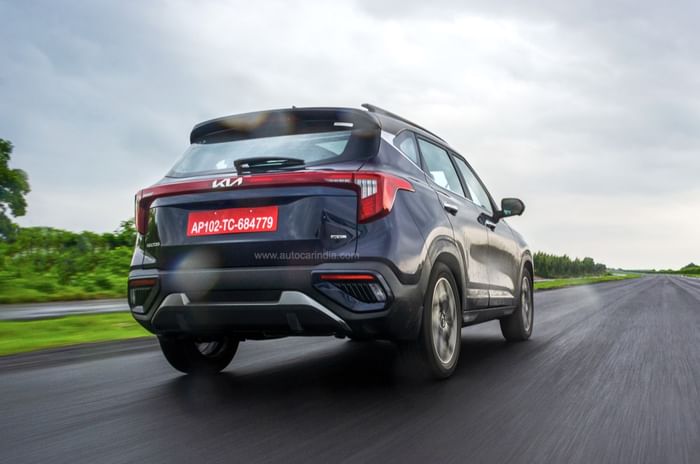 The Seltos diesel-automatic feels right at home on the highway.
The Seltos diesel-automatic feels right at home on the highway.
There’s also a 115hp, 1.5-litre naturally aspirated petrol engine with a 6-speed manual or CVT, though we didn’t get a chance to test this or the diesel-manual and turbo-iMT combos just yet.
Kia Seltos mileage and efficiency – 7/10
Turbo-petrol will be thirsty but the diesels will be efficient, especially on highway drives
While we didn’t subject the Seltos to our real-world fuel efficiency test, Kia claims the 1.5 turbo-petrol-DCT will do 17.9kpl, with the diesel-auto said to return 19.1kpl. Do note, however, that these numbers will vary by a fair margin in real-world driving scenarios. The turbo-petrol-DCT especially will struggle to get to double-digit figures in the city. The diesels, as expected, will be the most fuel-efficient of all the engine options.
Kia Seltos ride comfort and handling – 8/10
Suspension feels jittery at low speeds, but it is planted and stable; handling is predictable
The facelift brings mechanical updates too. Kia has tweaked the suspension: stiffer front damping improves handling, and softer rear damping improves ride comfort. Even with larger 18-inch wheels on the X-Line, the ride remains composed.
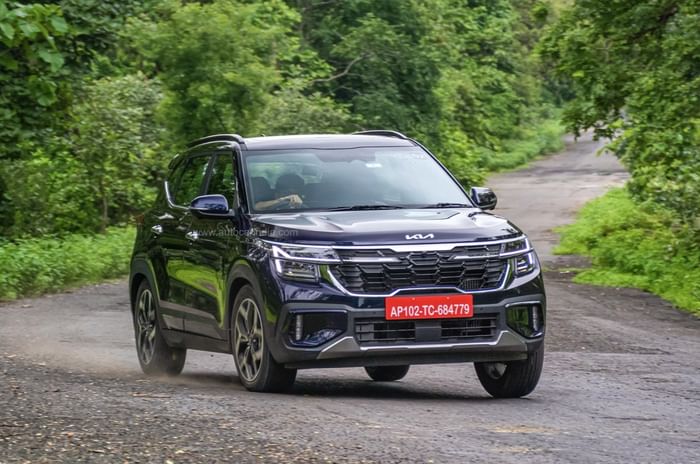
Handling feels balanced, with controlled body movements and decent steering weight in Sport mode – though it lacks feedback. Brakes are progressive and offer strong stopping power with good pedal feel.
At low speeds, it can feel a bit stiff and jittery, but we drove with just the driver on board – it should feel more compliant when loaded. It handles road imperfections well and rarely feels unsettled. On highways, it feels planted and stable.
Kia Seltos features and safety – 9/10
Has all the feel-good and safety features you’d want, and then some more
Kia has packed the Seltos facelift with all the features you’d need. Highlights include the panoramic sunroof, dual-zone climate control (a segment-first), dual 10.25-inch screens for the infotainment and instrumentation, radar-based ADAS tech, and a new premium-feel key.

Top variants include a 360-degree camera, blind-spot monitor, a heads-up display, auto lights and wipers, a Bose audio system, powered driver’s seat, ventilated front seats, air purifier, wireless phone charging, and more. Safety kit includes six airbags, all-round disc brakes, ESP, hill-hold assist, and TPMS are standard.
The ADAS suite includes 17 functions, like forward collision warning, autonomous emergency braking, blind-spot warning, lane-keep assist, and adaptive cruise control. It uses five cameras and three radar sensors. On well-marked roads, it worked smoothly, though drivers will need to get used to the frequent alerts – which can be turned off.
Kia Seltos price and verdict – 9/10
Refined and premium, it’s the benchmark in the midsize SUV segment
The facelifted Kia Seltos is priced from Rs 11.19 lakh for the base HTE (O) 1.5 petrol to Rs 20.56 lakh for the fully loaded X-Line turbo-petrol DCT (ex-showroom). At the top-end, it’s on par with rivals like the Maruti Grand Vitara and Toyota Hyryder but is costlier than others like the MG Astor, Skoda Kushaq, VW Taigun, and Hyundai Creta. However, considering the new tech, fresh design, and new engine, it remains a compelling value proposition.
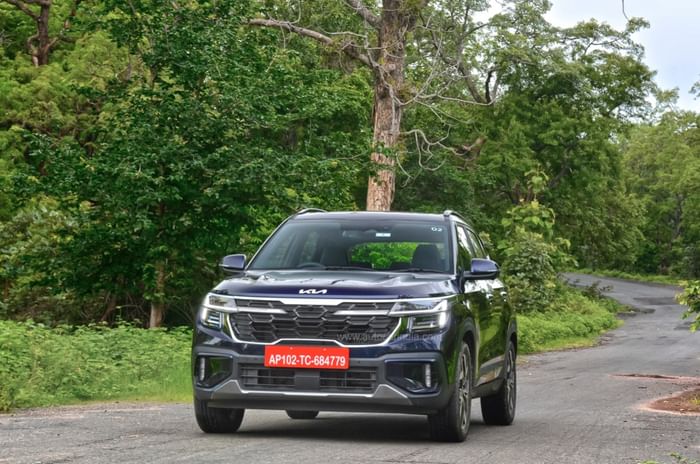 The Seltos facelift is a premium, well-rounded package.
The Seltos facelift is a premium, well-rounded package.
Kia hasn’t reinvented the Seltos – it didn’t need to. But the thoughtful tweaks across exterior, interior, features, and powertrains elevate it into a more refined and upmarket package. It remains one of the few SUVs in the segment with a diesel option and a wide array of variants. While choosing the right one can be tricky, and top variants are pricey without hybrid tech, once you’ve zeroed in on the right trim, the Seltos delivers solid value.




















